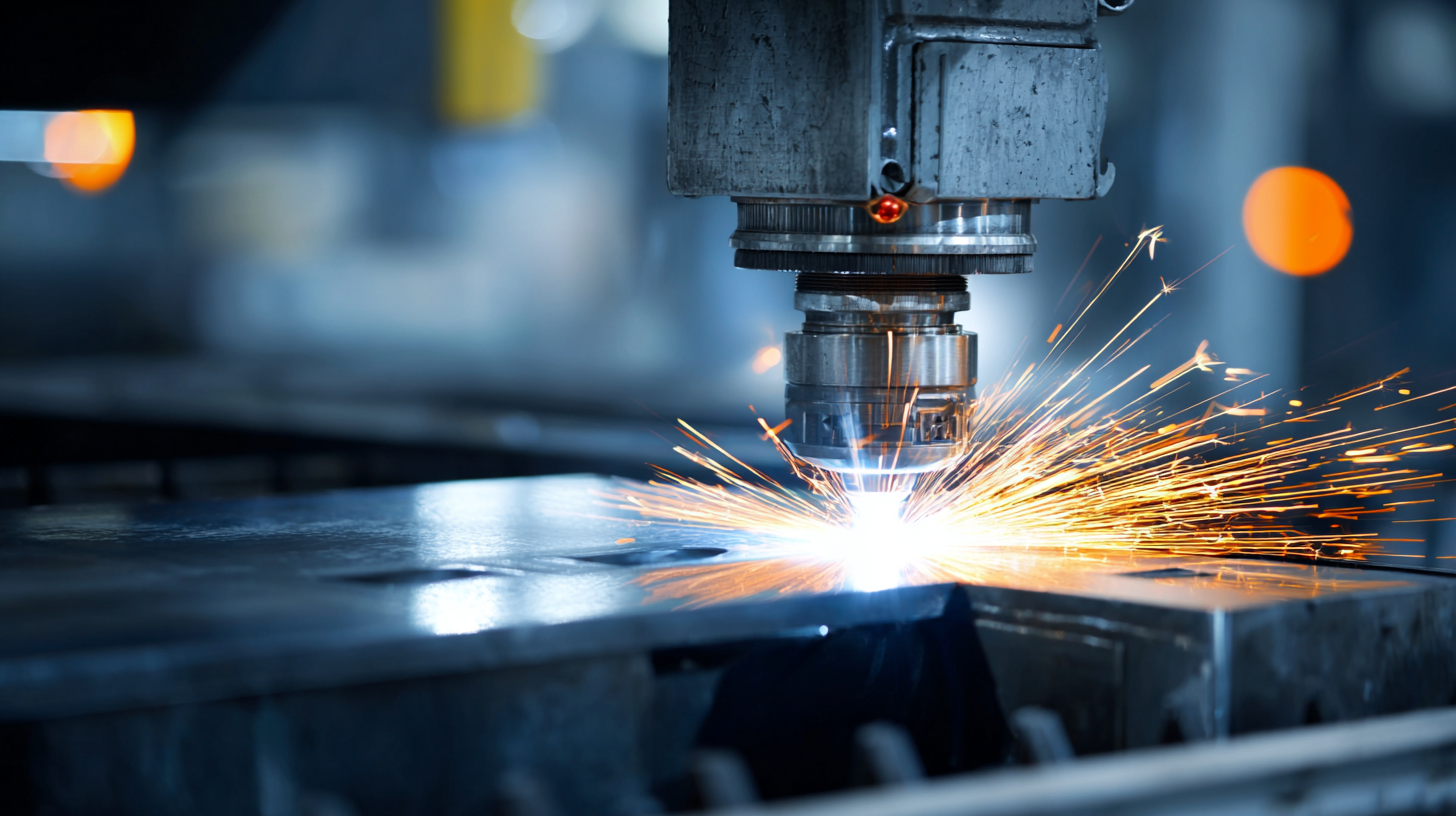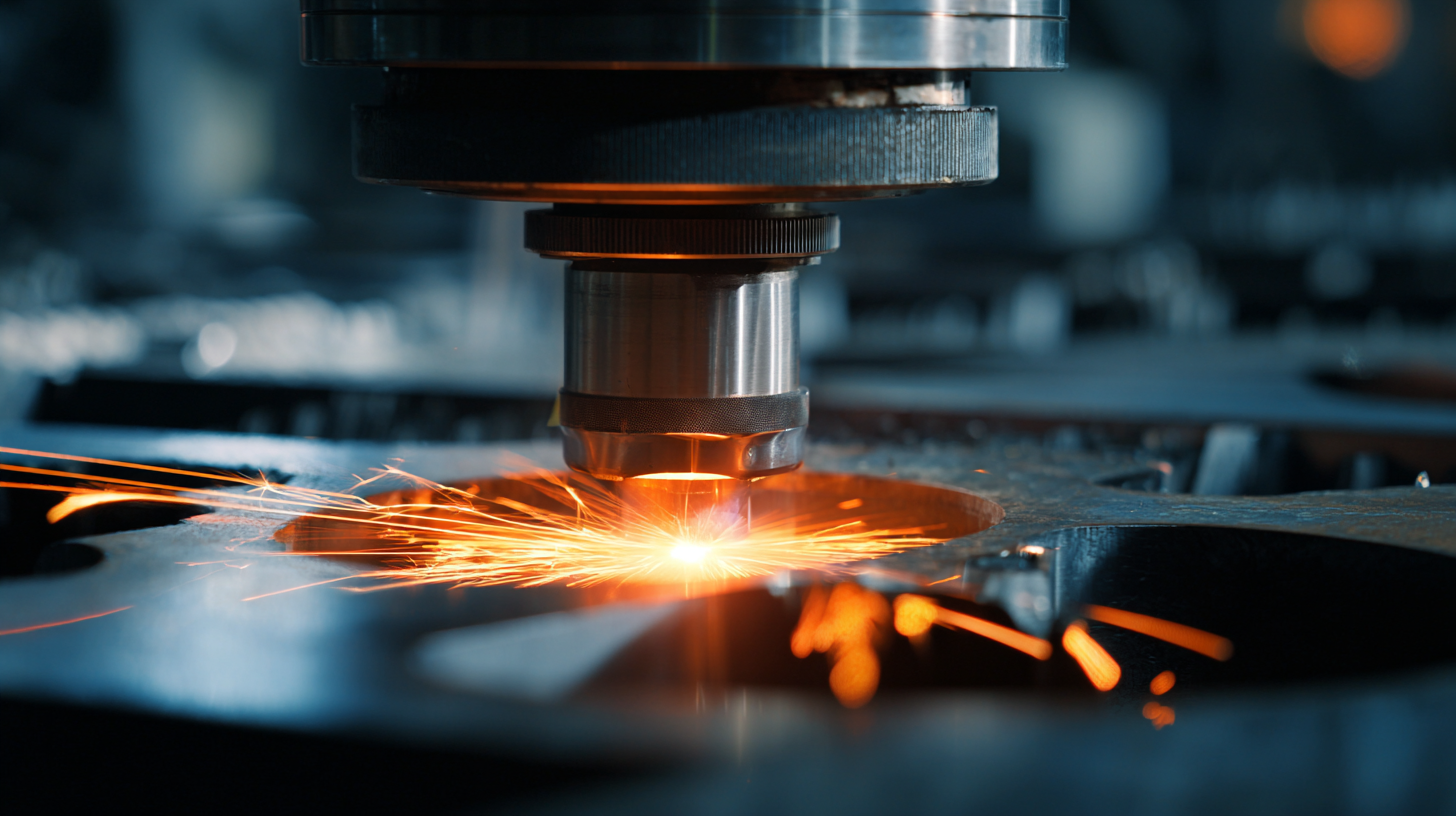In today's rapidly evolving industrial landscape, the demand for efficient and reliable repair and maintenance solutions has never been more critical. As industries strive to enhance productivity while minimizing downtime and costs, innovative techniques are emerging to address these challenges. One such revolutionary technology is Laser Clad Welding, which is rapidly gaining recognition as a game-changer in the realm of industrial repairs. This process not only ensures superior bonding and durability but also significantly reduces the time taken for maintenance tasks.
Laser Clad Welding offers a unique blend of precision and efficiency, allowing for the restoration of critical components with minimal material waste. Its ability to fuse new materials seamlessly onto worn-out surfaces paves the way for extended equipment lifespans and reduced operational costs. As we look ahead to the next few years, it’s clear that the integration of Laser Clad Welding into maintenance strategies will be pivotal for industries aiming to maintain competitiveness and operational excellence. In this exploration, we will delve into the top five reasons why Laser Clad Welding is set to redefine repair and maintenance solutions by 2025, highlighting its transformative potential across various sectors.

 Laser clad welding is emerging as a transformative technique in the industrial repair and maintenance sector, primarily due to its numerous advantages compared to traditional methods. One of the most significant benefits is its capability for
precise material deposition. This precision minimizes material waste and reduces the need for extensive post-welding cleanup, leading to increased efficiency in operations.
Additionally, laser clad welding can be used to restore worn-out components with minimal heat input, reducing the risk of heat-affected zone (HAZ) deformation and preserving the integrity of base materials.
Laser clad welding is emerging as a transformative technique in the industrial repair and maintenance sector, primarily due to its numerous advantages compared to traditional methods. One of the most significant benefits is its capability for
precise material deposition. This precision minimizes material waste and reduces the need for extensive post-welding cleanup, leading to increased efficiency in operations.
Additionally, laser clad welding can be used to restore worn-out components with minimal heat input, reducing the risk of heat-affected zone (HAZ) deformation and preserving the integrity of base materials.
Another advantage of laser clad welding is its versatility in applying various alloying materials. Industries can customize their repair solutions by selecting specific alloys that enhance properties like wear resistance, corrosion resistance, or thermal stability. This adaptability makes laser cladding an attractive solution for diverse applications, from aerospace components to heavy machinery. Furthermore, the rapid process of laser clad welding allows for quicker turnaround times, which is essential in today’s fast-paced industrial environments where downtime can lead to significant financial losses. As these benefits continue to be recognized, laser clad welding is poised to become the go-to technique for industrial repair and maintenance.
Laser clad welding represents a significant advancement in industrial repair and maintenance solutions, driven by innovative technologies that enhance its efficiency and effectiveness. At the core of this process is the use of high-powered laser beams, which allow for precise application of materials onto existing substrates. This method not only repairs damaged surfaces but also improves the component's durability, enabling industries to extend the lifecycle of their machinery and reduce operational downtimes.
Moreover, advancements in laser technology, such as fiber lasers and automated systems, have increased the accessibility and scalability of laser clad welding. These innovations enable faster processing times and greater consistency in repair quality, which are crucial in high-demand industries like aerospace and manufacturing. As industries seek sustainable alternatives to traditional repair methods, the combination of efficiency, precision, and reliability offered by laser clad welding positions it as a leading solution for future maintenance challenges. Continuous research and development are likely to further unlock its potential, making it an indispensable tool in modern industrial applications.
Laser clad welding is rapidly gaining traction in industrial repair and maintenance due to its cost-effectiveness and efficiency. According to a report by Research and Markets, the global laser cladding market is projected to reach USD 2.6 billion by 2025, driven by its proven ability to reduce downtime and operational costs. Traditional repair methods often involve extended periods of machinery being offline, which can result in substantial losses. In contrast, laser clad welding minimizes repair times, allowing for quicker return to operational status. This efficiency is particularly beneficial for industries that rely on continuous operation, such as manufacturing and energy.
Moreover, the precision of laser technology means that less material is wasted compared to conventional welding methods. A study by the American Welding Society highlights that laser cladding can result in up to 70% less material waste, translating to significant savings on raw materials. Additionally, the durable nature of the clad layers enhances the lifespan of repaired components, leading to fewer replacements and maintenance interventions over time. As industries seek more sustainable and cost-effective solutions, laser clad welding is poised to become a pivotal technology for the future of industrial repair and maintenance.
| Dimension | Laser Clad Welding | Traditional Welding |
|---|---|---|
| Material Utilization Efficiency | Up to 95% | 60-70% |
| Repair Time | Reduced by 50% | Standard time |
| Cost of Material | Lower due to high efficiency | Higher wastage |
| Thermal Deformation | Minimal | Significant |
| Post-Processing Needs | Lower | Higher |
 Laser cladding welding has emerged as a revolutionary method in the field of industrial repair and maintenance, offering numerous advantages over traditional welding techniques. A comparative analysis reveals that laser cladding not only enhances surface quality but also improves mechanical performance significantly. For instance, recent studies indicate that a hybrid laser method can elevate the surface characteristics of stainless steel coatings, leading to enhanced durability and resistance to wear. Moreover, laser cladding techniques, particularly high-speed variants, can achieve impressive deposition speeds—up to 30 m/min—which drastically reduces production time compared to conventional methods.
Laser cladding welding has emerged as a revolutionary method in the field of industrial repair and maintenance, offering numerous advantages over traditional welding techniques. A comparative analysis reveals that laser cladding not only enhances surface quality but also improves mechanical performance significantly. For instance, recent studies indicate that a hybrid laser method can elevate the surface characteristics of stainless steel coatings, leading to enhanced durability and resistance to wear. Moreover, laser cladding techniques, particularly high-speed variants, can achieve impressive deposition speeds—up to 30 m/min—which drastically reduces production time compared to conventional methods.
Tips: When considering laser cladding welding for your industrial applications, it’s crucial to evaluate the specific requirements of your materials and intended use. Ensuring proper parameter optimization can lead to superior results, such as improved penetration and reduced defects. Additionally, integrating laser-assisted methodologies could enhance both efficiency and sustainability in your processes, tailoring solutions to meet the growing demands for greener industry practices.
The comparative benefits of laser cladding extend beyond just speed; studies show that microstructural integrity is often superior in laser-cladded materials compared to those joined by traditional methods. This resilience, combined with the ability to work with thick plates, positions laser cladding as a viable alternative for maintaining critical components in industries such as construction and manufacturing. By embracing cutting-edge techniques, businesses can not only save time and costs but also ensure the longevity and reliability of their equipment.
Laser clad welding is rapidly emerging as a pivotal solution in the realm of industrial repair and maintenance. Its advanced technology not only enhances the durability of components but also significantly reduces downtime associated with traditional welding methods. Future trends indicate that the integration of additive manufacturing principles with laser cladding will further revolutionize repair processes, enabling more precise and complex geometries to be restored or enhanced.
Moreover, the growing emphasis on sustainability is pushing industries towards implementing laser clad welding as a more environmentally friendly alternative. The ability to use minimal materials while achieving maximum strength aligns with the evolving standards of eco-friendly practices. As industries continue to prioritize efficient and sustainable operations, the adoption of laser clad welding techniques will likely accelerate, positioning it as a cornerstone of modern repair and maintenance strategies. The continuous advancements in laser technology will also expand its applications, making it indispensable for future industrial scenarios.
